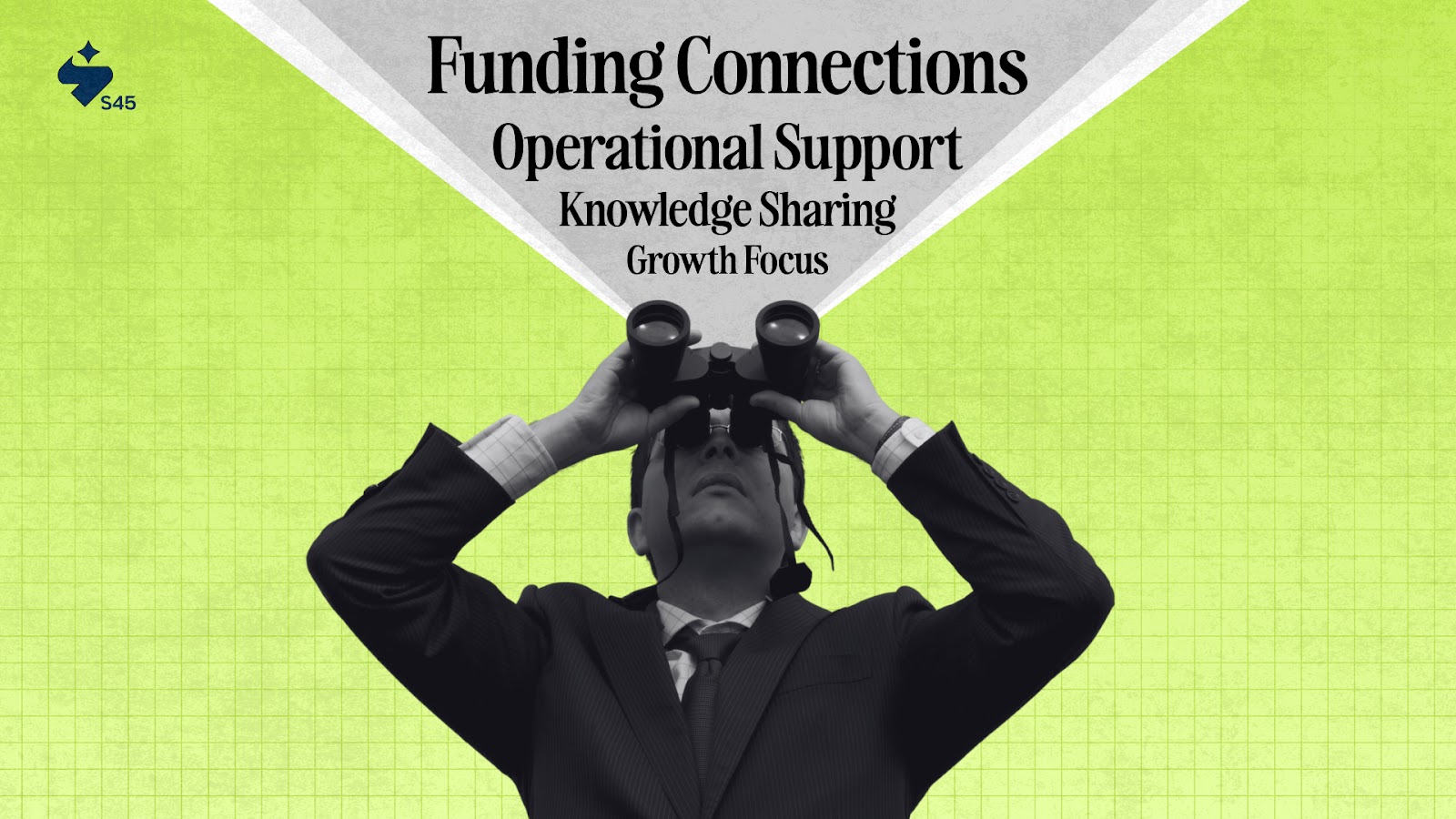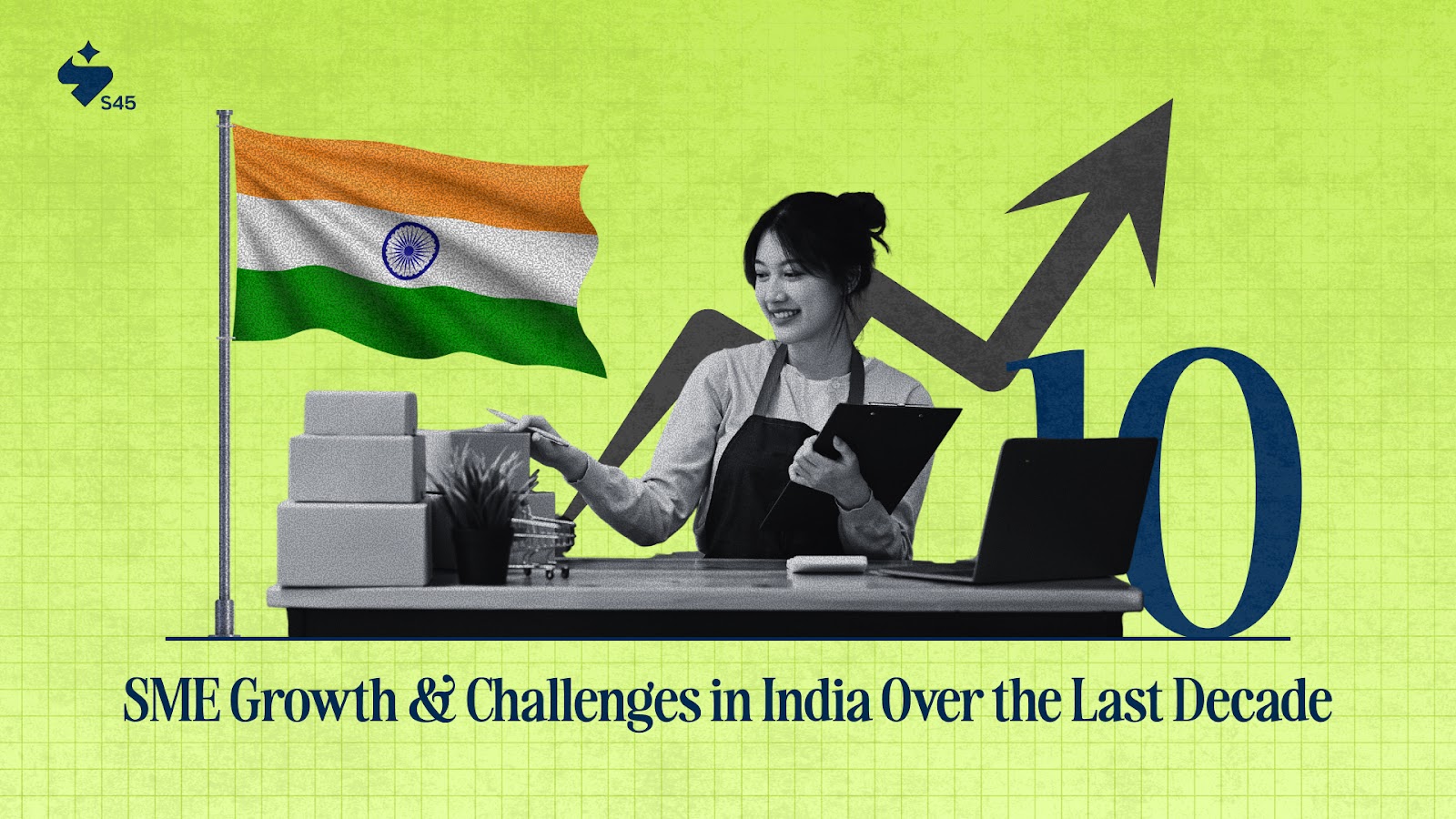
Key Takeaways:
- Small and medium enterprises are important for India’s economy, creating jobs, bringing new ideas, and supporting exports.
- Founders face challenges like difficulty getting loans, old technology, lack of skilled staff, rising costs, and following rules.
- Using e-commerce, automation, analytics, and good financial management helps SMEs grow and stay competitive.
- Training staff and building partnerships help founders grow their business and reach more customers.
- Steady growth balances ambition with control, showing real SME progress in India over the past decade.
As of May 2025, 6.44 crore MSMEs, employing 26.77 crore people, are registered on the Udyam Registration Portal and the Udyam Assist Platform (UAP). Their contribution to the economy has stayed strong at around 30% of GDP and 45% of exports, making SMEs the backbone of India’s growth story.
The Union Ministry of Micro, Small, and Medium Enterprises (MSMEs) has received an allocation of Rs. 23,168 crore in the FY26 Union Budget, reflecting a 4.6% increase compared to the FY25 Budget.
This growth story is more than just numbers. It reflects the sector’s resilience during disruptions like the pandemic, as well as its ability to adapt to digitalization, new credit models, and government-backed reforms. SMEs are no longer limited to local trade—they are fueling India’s manufacturing push, boosting global competitiveness, and creating millions of new jobs each year.
At the same time, SMEs have shown impressive growth, with millions of enterprises contributing significantly to India’s economy, generating jobs, and driving exports. Finding the right balance between expanding your business and maintaining control can be tough.
SME Growth Opportunities Available for Indian SMEs

If you’re running a growing SME in India, the good news is that the next decade could be even bigger than the last.
A founder’s lens
If you’re asking, “Where can I grow my business in the next 3–5 years?”
The answer is exports, digital channels, new-age financing, government incentives, and India’s domestic consumption boom. The real question is not whether opportunities exist. It’s whether you’re ready to align strategy, compliance, and execution to seize them.
But growth doesn’t just happen—you have to know where to lean in. Here are the opportunities that matter most for founders like you:
1. Export-led growth
India’s SMEs already account for 45% of the country’s exports. Demand for “Made in India” products, ranging from textiles to auto parts to IT-enabled services, is only rising.
With free trade agreements (FTAs) being signed (UAE, Australia, UK in pipeline), SMEs that can meet compliance standards and scale production have a real shot at global markets.
Your takeaway: If you haven’t looked at exports yet, start small with government-backed export promotion councils or e-commerce export platforms. Even a single overseas buyer can multiply revenues.
2. Digital adoption & e-commerce
From GST filing to B2B marketplaces, the past five years have forced digital adoption. SMEs that moved online saw higher margins and better reach. With India’s e-commerce market expected to hit $350B by 2030, B2B and D2C models are opening low-cost distribution channels.Your takeaway: This is the time to invest in basic digital infrastructure—ERP, digital payments, and an e-commerce storefront. Early adopters of SaaS tools for marketing, CRM, and logistics are already seeing 20–30% cost efficiency gains.
3. Financing & credit access
Credit used to be the biggest bottleneck. Not anymore. Between CGTMSE guarantees, Mudra loans, and fintech-driven SME lending, credit access is widening fast. Government schemes sanctioned over ₹5.2 lakh crore in guarantees by 2024, and fintechs are plugging gaps with invoice discounting, supply chain finance, and cross-border payment solutions.
Your takeaway: Move beyond bank loans—tap into government-backed guarantees, NBFCs, and even revenue-based financing if you’re in growth mode. Capital is no longer the limiting factor; execution is.
4. Government policy tailwinds
Schemes like ‘Make in India,’ RAMP, and Production-Linked Incentives (PLI) are designed with SMEs in mind. PLI, for example, rewards manufacturers in electronics, textiles, and pharmaceuticals who scale production.
Your takeaway: Track schemes that overlap with your sector. Even if you don’t qualify today, structuring operations around compliance and scale-readiness will keep you investment- and incentive-ready.
5. Domestic demand surge
India is adding millions to its consuming class every year. Rising middle-class income means SMEs in FMCG, healthcare, renewable energy, mobility, and edtech are positioned for 10–15%+ demand growth annually.
Your takeaway: Instead of chasing only global opportunities, think about how your business can scale with India’s rising consumption story.
6. Tech & automation
From AI-driven customer acquisition to robotics in light manufacturing, SMEs are no longer priced out of automation. Affordable SaaS, cloud, and AI solutions mean you can scale operations without scaling headcount proportionally.
Your takeaway: Don’t wait to “get big enough” to adopt tech. The SMEs growing fastest are those integrating automation early—reducing unit costs and freeing up human capital for high-value tasks.
Opportunities are plenty. But if you’ve been building in India, you already know growth doesn’t come without roadblocks.
The Flip Side: Challenges Every SME Founder Must Factor In

The same forces creating headroom for expansion also bring challenges that can eat into margins, slow down scaling, or even threaten survival if left unchecked. Here are the realities you’ll want to plan for:
1. Access to sustainable financing
Yes, credit access has improved. But as a founder, you know the fine print.
High interest rates from NBFCs, collateral requirements from banks, and inconsistent fintech underwriting models can still squeeze cash flows.
Impact: Over-leverage or poorly structured debt can choke working capital and limit reinvestment in growth, especially if repayment cycles don’t match your business cycles.
2. Talent and skills gap
Digital adoption is exciting, but finding people who can actually run ERP systems, manage exports, or handle compliance is still hard. Most SMEs rely on a handful of trusted employees who wear too many hats.
Impact: If you can’t build a skilled team, scaling beyond a certain point becomes impossible. It also makes you vulnerable to losing key people.
3. Infrastructure and supply chain bottlenecks
Government incentives are pushing manufacturing, but logistics costs in India are still 13–14% of GDP compared to 8–9% in developed economies. Last-mile delivery, port delays, and inconsistent electricity supply in smaller towns can eat away at your competitiveness.
Impact: Even if demand exists, you risk delays, higher costs, and customer dissatisfaction—slowing down your growth momentum.
4. Compliance overload
From GST filings to labor laws to export documentation, regulatory compliance is still a maze. Large corporations have dedicated compliance teams; SMEs often rely on consultants or manage with minimal paperwork.
Impact: Non-compliance doesn’t just risk penalties—it makes you ineligible for schemes, loans, and export deals, shutting you out of key opportunities we discussed earlier.
5. Digital divide & cybersecurity risks
Technology is the great equalizer, but going digital brings new headaches—cyber threats, data security issues, and constant tech upgrades. Most SMEs don’t have dedicated IT teams, making them soft targets.
Impact: A single cyberattack or payment fraud can wipe out months of profits and erode customer trust.
6. Global competition
With FTAs opening markets, Indian SMEs can sell abroad—but it also means foreign brands are entering India more aggressively. Competing on price alone is a losing strategy.
Impact: If you don’t invest in brand, quality, and innovation, you’ll risk becoming irrelevant in both domestic and export markets.
Converting SME Challenges into Competitive Advantages
For most founders, challenges feel like roadblocks. Cash crunches, regulatory headaches, and customer churn are a few to name.
But the reality is, these very struggles can become the raw material for competitive advantage if approached with the right mindset. Here’s how you can flip the script:
1. Identify untapped market needs
Competition and shifting customer demands can look threatening, but they’re also signals. If customers are unhappy with what’s out there, that’s your opening. Many successful SMEs built their edge by spotting unmet needs, be it hyper-local services, sustainable products, or affordable alternatives.
Your Takeaway: Treat every complaint or lost deal as market research you didn’t have to pay for.
2. Use lean practices
Funding constraints are common, but they can sharpen your business discipline. Lean practices—reducing waste, automating manual tasks, outsourcing non-core work—don’t just cut costs, they build resilience. In many cases, SMEs with tighter operations outperform well-funded peers during downturns.
Your Takeaway: Constraints force focus. Use them to build a “profit-first” culture.
3. Adopt flexible business models
If compliance rules or operational hurdles slow one revenue stream, don’t stay stuck. SMEs that experimented with subscription models, digital storefronts, or diversified service offerings often discovered more predictable cash flows and wider customer reach.
Your Takeaway: Flexibility isn’t a fallback—it’s how SMEs outmaneuver slower, larger competitors.
4. Use feedback loops for innovation
Customer complaints, supplier delays, even internal team challenges—they’re not just frustrations, they’re insights. SMEs that create fast feedback loops—listen, iterate, launch—tend to innovate faster and win loyalty.
Your Takeaway: Every issue raised by your customers or employees is a free blueprint for your next product improvement.
5. Turn setbacks into brand strength
Supply chain disruptions, skill shortages, or financial hurdles can actually strengthen your story. Founders who share how they overcame obstacles create authenticity that resonates with customers and partners. In the SME world, your scars often become your strongest brand asset.
Your Takeaway: Don’t hide the struggle, build it into your brand narrative.
6. Explore collaborative ecosystems
When one SME struggles alone, it’s tough. But when SMEs partner—whether with startups, tech providers, or other small businesses—they create new opportunities. From co-manufacturing and shared distribution to joint digital platforms, ecosystems multiply reach while reducing individual risk.
Your Takeaway: Growth doesn’t always mean going solo; collaboration is often the faster path to scale.
By viewing challenges as signals rather than roadblocks, SME founders can discover creative solutions, improve resilience, and grow sustainably in the Indian market.
Many of these shifts, like lean practices, flexible models, and ecosystem partnerships, require structured guidance and tools.
Your Next Move Could Define the Next Decade
The next immediate step is easy. Platforms like s45club become highly valuable to founders. Not as a “service provider,” but as an enabler helping SMEs spot untapped market gaps, systemize lean operations, and connect with collaborative networks. For a founder, this means less trial-and-error and more speed in turning today’s challenges into tomorrow’s competitive edge.
Founders working with S45 are already turning today’s challenges into tomorrow’s edge. Don’t be the one catching up later. Talk to us here!
FAQs
Q. What are the main challenges SMEs face today?
Many SMEs struggle with access to affordable credit, outdated infrastructure, and a shortage of skilled workers. Rising costs and limited support for medium-sized enterprises can make sustained growth difficult.
Q. How is digital technology helping SMEs grow?
Digital tools like e-commerce, online payments, and marketing platforms expand your reach and improve efficiency. They also make it easier to access credit and scale operations effectively.
Q. What role does workforce training play in SME success?
Skilled employees help SMEs innovate, handle advanced tools, and manage operations efficiently. Investing in training builds a capable team and reduces dependence on founders.
Q. What strategies should SMEs adopt for future growth?
Focus on digital adoption, skill development for your workforce, and sustainable practices. These approaches help balance growth with long-term stability, making your business resilient in a changing market.
Q. How can SMEs access funding effectively?
SMEs can explore government schemes like Startup India, PMMY, CGTMSE, and Stand-Up India, as well as angel investors, venture capital, crowdfunding, and revenue-based financing to secure growth capital.


